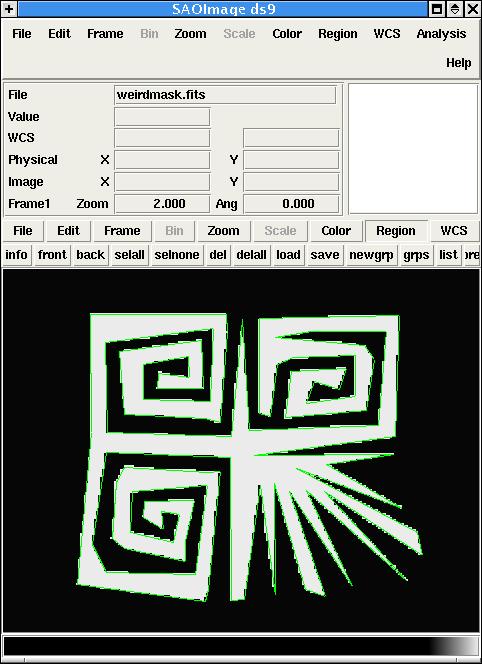
The easiest way to mask out a large region interactively is to use SAOimage DS9 in conjunction of two algorithms ``ds9poly.c'' and ``fillpoly.f'' that I provide, with instructions below. The steps look long, but once everything is set up, the only steps to remember are: draw polygon, run ``ds9poly'', and run``fillpoly''.Above: an example of an image mask. The green outline is the polygon drawn into SAOimage DS9, and the filling is done by the ``fillpoly'' program.
 )
)